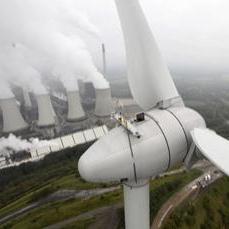impact of the Fukushima disaster on Environmental sustainability and economic sustainability, and the dilemma for policy makers in providing enough energy to maintain standards.
Fear after Fukushima to push up carbon emissions
- 08 March 2012 by Fred Pearce and Sara Reardon, Fukushima Legacy
One of the less-noted consequences of the nuclear disaster at Fukushima is the effect on carbon dioxide emissions. Two of the world’s six largest emitters are switching off their nuclear power stations, leaving them needing to source energy from elsewhere.
Germany has permanently shut eight of its older nuclear reactors and promised to close the remaining nine by 2022. The decision was cemented in September, when Siemens, which built all of Germany’s nuclear plants, withdrew from the nuclear industry. It also seems increasingly unlikely that Japan will restart the more than 50 nuclear reactors that have been closed for safety checks since the accident. Last week, the cities of Osaka, Kyoto and Kobe told utility companies that they no longer wanted nuclear power.
Elsewhere, the impact has been lower than many anticipated. The US and UK still intend to resume building nuclear power after a long pause. China, India and France all aim to carry on as before. Italy and Switzerland have decided to abandon plans for future plants, but existing plants will live out their remaining lives.
So what do the German and Japanese decisions mean for carbon emissions? Germany’s energy gap is unlikely to be met by renewables. A large expansion of wind and solar power is already built into the country’s energy plans, and it is unlikely to be able to churn out more. Other options are to burn more coal, import more gas or import more electricity.
German gas mostly comes from Siberia, a dependency the country is keen to avoid. Importing electricity from neighbours like nuclear-powered France is more attractive. The World Nuclear Association, an industry body, says this is the only way for Germany to keep its promise to cut CO2 emissions by more than 20 per cent by 2020.
But coal is cheap. It already provides most of Germany’s electricity, and more is available within the country’s borders. Even before the Fukushima disaster, German companies were building new coal-fired power plants.
Some analysts say the shutdown will push up German CO2 emissions by between 40 million and 60 million tonnes a year – about 6 per cent – depending on what replaces them.
In Japan, a permanent shutdown would boost annual CO2 emissions by 60 million tonnes – or more than 5 per cent – as the nation draws extra power from burning fossil fuels, according to the country’s Institute of Energy Economics.
All told, that is nearly a billion-tonne jolt to the planet’s climate by 2020, and more beyond. That is small compared with global CO2 emissions – likely to be more than 400 billion tonnes in the same period. But it would send the wrong signal from two of the world’s largest emitters. And anyone involved in climate negotiations will tell you that cuts aren’t easy to agree on. The additional German emissions alone could add up to more than 300 million tonnes by 2020, which, according to the World Nuclear Association, would “virtually cancel out the 335-million-tonne savings intended to be achieved in the entire European Union by the 2011 Energy Efficiency Directive”.







